People want their heart health supplements. The category’s sales always tops the charts, as the desire to preserve and protect cardiovascular wellbeing remains consistent among adults of all ages. But the ways these products are designed, produced and promoted are all changing against this backdrop of steady consumer demand. Even the factors doctors deem most relevant for a maintaining a healthy heart are undergoing revision, a shift that will impact the supplements space.
Numbers, Strategies and Challenges
All approaches to improving heart health, supplements included, are of vital importance to modern society. Just take a look at the numbers, courtesy of Trisha Sugarek MacDonald, B.S., M.S., director of R&D and national educator for Bluebonnet Nutrition Corporation, Sugar Land, TX.
The American Heart Association (AHA) estimates that about 83.6 million Americans, or one in three adults, have some type of cardiovascular disease (CVD) (1). CVD is a term that encompasses conditions including high blood pressure, coronary heart disease, heart failure, stroke and congenital cardiovascular defects, according to Sugarek MacDonald.
The costs are high and rising in terms of money and lives. Treatments for CVD have amounted to 17% of all U.S. health expenditures in recent years, and by 2030, the costs of treating heart disease will rise to $818 billion annually (2). CVD, particularly atherosclerotic coronary heart disease and stroke, is now the leading cause of death worldwide, according to the World Health Organization (WHO). By 2030, 23.3 million will die of it each year (3). “These numbers will continue to grow, especially in the developed world, as a consequence of the increased rates of type-2 diabetes, obesity and other lifestyle-related health issues,” says Sugarek MacDonald.
The multifactorial nature of CVD, she says, 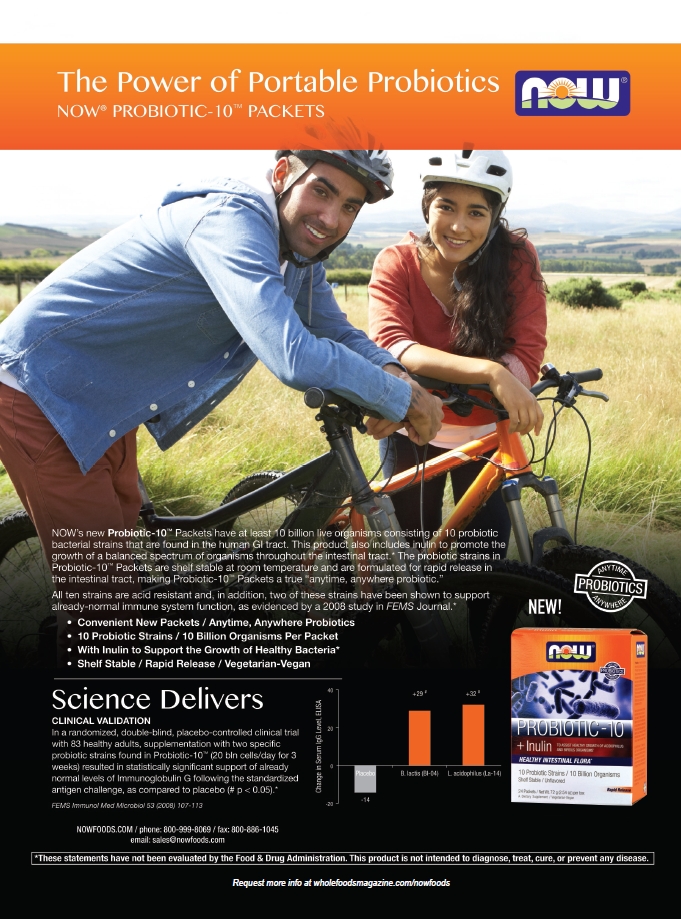 has set the stage for a variety of approaches to marketing supplements, from addressing cholesterol, triglycerides and homocysteine levels, to supporting healthy blood pressure, weight and antioxidant balance. Consumers are seeking out these supplements at the advice of their doctors, according to Jay Levy, director of sales for Wakunaga of America Co., Ltd., Mission Viejo, CA. “When compared to prescription drugs, doctors’ visits and hospital charges, consumers are discovering that dietary supplements are an extremely cost-effective way to sustain and promote heart health,” he says.
has set the stage for a variety of approaches to marketing supplements, from addressing cholesterol, triglycerides and homocysteine levels, to supporting healthy blood pressure, weight and antioxidant balance. Consumers are seeking out these supplements at the advice of their doctors, according to Jay Levy, director of sales for Wakunaga of America Co., Ltd., Mission Viejo, CA. “When compared to prescription drugs, doctors’ visits and hospital charges, consumers are discovering that dietary supplements are an extremely cost-effective way to sustain and promote heart health,” he says.
Bryan See, regional product manager at Carotech Inc., Edison, NJ, cites a recent survey from the Council for Responsible Nutrition that found 32% of all adults use dietary supplements for heart health (36% of men and 28% of women) (4). “This underscores the significant market for ingredients that are scientifically substantiated for cardioprotection,” he says. Consumers, See adds, are becoming increasingly aware of the need to take preventive measures, and those in good health are inclined to look for products that address general cardiovascular health.
“In a way, this heightened awareness simplifies marketing cardiovascular support products because the target audience already knows there’s a problem that must be addressed,” says Orrie Rondinella, director of sales and marketing for Sylvan Bio, Kittanning, PA. However, he explains that with the glut of cardiovascular support products available, it is important for brands to differentiate themselves quickly and efficiently to consumers.
Watch out for products that try to stand out from the crowd with unsupportable claims. “Manufacturers have to resist the urge of overpromising with their products,” and this means being cautious with their claims and label wording, says Eric Anderson, senior vice president of global sales and marketing for NattoPharma USA, Inc., Metuchen, NJ. Product names need to be clear, he says, so that they are properly placed by retailers and can be easily identified by consumers. Beyond this, the overall message of the product needs to be conveyed. “For all the recognition that some ingredients are getting these days, manufacturers (and retailers) cannot assume that the consumer knows their benefits,” Anderson says.
Ingredients vs. health claims. The question for supplement makers is which marketing approach to lead with on packaging and promotional materials. Do they highlight the ingredients that star in their products? Or do they use words and images to convey that the product is intended to support heart health or address a specific factor like blood pressure? Often these approaches are combined. But the reasons for emphasizing one over the other reveal a lot about how consumers and manufacturers perceive this supplement category.
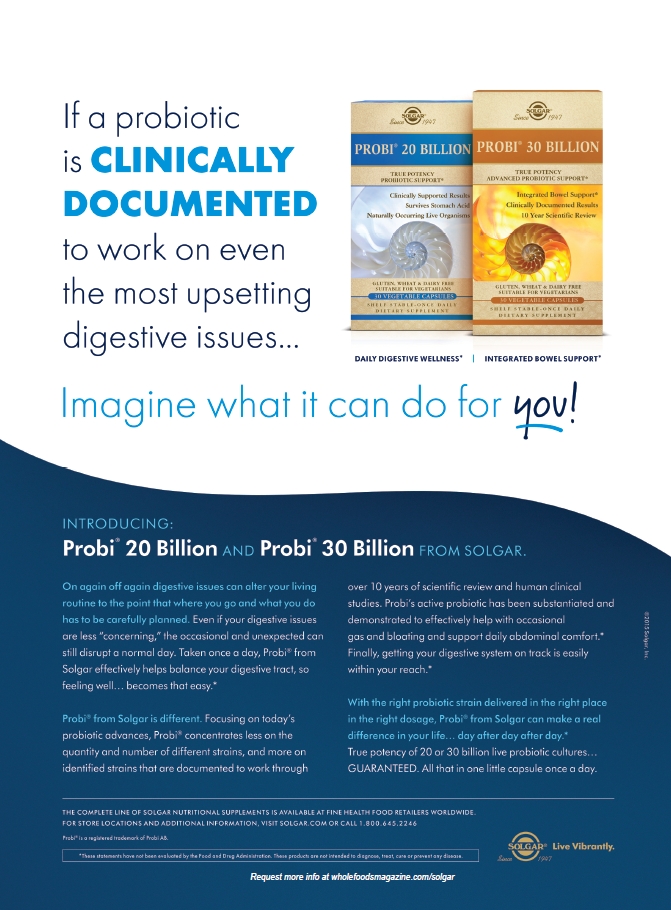 Most products on the market feature at least one heart-related claim on the primary display panel (PDP), explains Gene Bruno, M.S., MHS, director of category management for Twinlab Corporation, New York, NY. “The bigger difference usually comes when comparing single ingredients versus formulated products,” he says. In general, most products that are primarily focused on one “legacy” ingredient like CoQ10 or omega-3s tend to promote that ingredient on the PDP. Products that contain a unique formulation will often use a mixture of graphics, product name and verbiage to help it stand out, Bruno says.
Most products on the market feature at least one heart-related claim on the primary display panel (PDP), explains Gene Bruno, M.S., MHS, director of category management for Twinlab Corporation, New York, NY. “The bigger difference usually comes when comparing single ingredients versus formulated products,” he says. In general, most products that are primarily focused on one “legacy” ingredient like CoQ10 or omega-3s tend to promote that ingredient on the PDP. Products that contain a unique formulation will often use a mixture of graphics, product name and verbiage to help it stand out, Bruno says.
“Consumers are still very ingredient focused when looking for a heart health supplement,” says Naomi Whittel, founder and CEO of Reserveage Nutrition, Gainesville, FL. CoQ10 is a good example, as doctors often recommend it to patients that use statin drugs. Statins have been known to deplete CoQ10 stores in the body, Whittel says.
Consumer awareness of an ingredient will usually dictate how the product is marketed, according to Andreas Koch, marketing director for Barlean’s, Ferndale, WA. He says omega-3s will dominate PDPs since they are universally known.
Omega-3s are indeed well-known to support heart health, but companies know they must still provide reminders of this when marketing supplements, says Marci van der Meulen, national sales manager for the retail division of Nordic Naturals, Watsonville, CA. She notes that there is a trend toward using statistics to grab and convince consumers. “Data from studies on omega-3s and heart health has gotten increased attention across the industry, and it’s making its way into supplement marketing,” she says.
On the flip side of the equation, messages about ingredients that aren’t as widely recognized need to be conveyed more explicitly. “Something like palmitoleic acid is less known, so you’d see ‘Heart Health’ instead,” Koch says.
Almost all brands use heart images in their packaging and marketing collateral, says Rondinella, adding that many also incorporate heart references into the product’s name. “One example is Bayer’s TruHeart supplement with plant sterols, CoQ10 and vitamin D3,” he says. This product makes a direct health claim on its packaging and its Web site, which states that sterols help lower LDL cholesterol. “What isn’t said is an efficacious serving size is four capsules daily,” adds Rondinella. While the inclusion of sterols allows such a claim, other products can’t make these direct claims and rely on consumer knowledge, he says. He gives the example of his company’s red yeast rice, explaining that the product’s consumer base understands what red yeast rice is and how it supports healthy LDL levels.
Naming products to call attention to 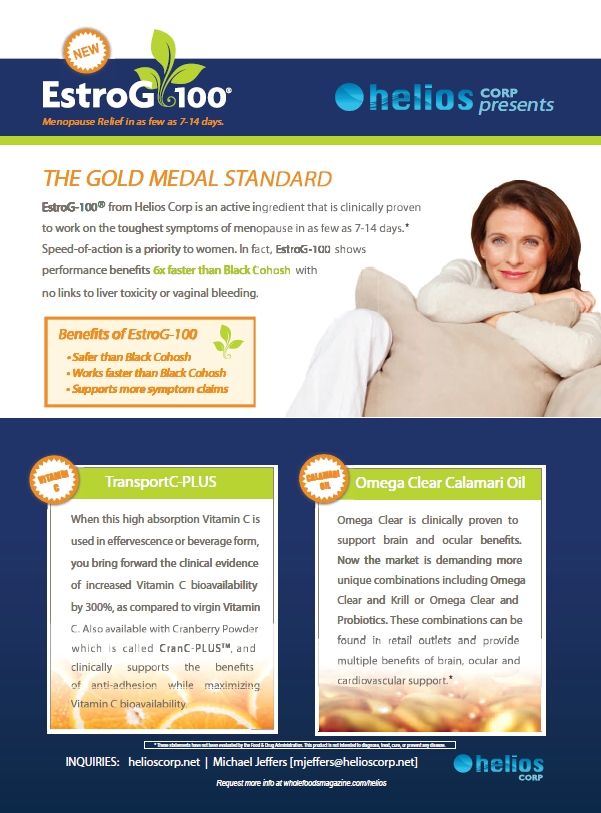 structure/function applications is often preferable, as long as adequate scientific evidence supports it, says Jim Ritcheske, product marketing manager for NOW Foods, Bloomingdale, IL. “If there is a lack of scientific support for a heart health structure/function claim, then the safer approach is to focus on the ingredient,” he says.
structure/function applications is often preferable, as long as adequate scientific evidence supports it, says Jim Ritcheske, product marketing manager for NOW Foods, Bloomingdale, IL. “If there is a lack of scientific support for a heart health structure/function claim, then the safer approach is to focus on the ingredient,” he says.
Michael Murray, N.D., director of product science and innovation for Natural Factors Nutritional Products, Monroe, WA, gives an example of a structure/function claim in action. He says his company recently added a cholesterol-focused product to its line of heart-specific formulas. A two-part strategy is employed to position the product using its name and marketing collateral. The name (Advanced Cholesterol Formula) directly refers to how the product supports heart health, and the product description highlights key active ingredients like niacin, a citrus peel and palm fruit extract (Sytrinol from Next Pharmaceuticals) and a hibiscus extract rich in anthocyanidins. “The benefits of the ingredients are well known and they have different mechanisms of action, producing a synergistic effect for maximum benefit,” Murray says.
Levy says his company promotes products that contain aged garlic extract (AGE) for overall cardiovascular health, based on over 750 published papers supporting its benefits. He says combination supplements are also frequently promoted for supporting heart health. He notes that one formula from his company blends AGE with nattokinase and a branded L-theanine (Suntheanine from Taiyo), and is marketed for supporting healthy blood pressure based on clinical studies.
It is common practice to make such claims, and marketers just need to make sure they do so accountably. “The responsible core of the industry makes structure/function claims for heart health as well as the many other body functions that contribute to heart health. It is extremely important not to mislead and to formulate knowledgably,” says David Winston, R.H. (AHG), founder of Herbalist & Alchemist, Washington, NJ.
Supplement manufacturers are proceeding with caution given the recent increase in lawsuits and regulatory activity involving heart health claims, says James Gibbons, president of Natural Organics, Inc. (Nature’s Plus), Melville, NY. “But, most of the legal and regulatory activity has not been with regard to the validity or legality of dietary supplement claims,” he adds. Instead, foods have been the focus, with perhaps the biggest case being a class action lawsuit against Campbell Soup and the AHA. The company’s soups are marketed as “heart healthy,” yet they contain high amounts of sodium.
|
Heart Healthiest Foods
Though it’s often hard to get enough of them, the nutrients used in supplements to support cardiovascular health can usually be acquired through the diet. The following foods deliver some of the top heart healthy nutrients with every bite. However, to get the 1,000 mg of EPA and DHA recommended by the American Heart Association, one would need to eat six ounces of wild-caught salmon per day, says Orrie Rondinella, director of sales and marketing for Sylvan Bio. “Yes, eating right and taking part in physical activity is crucial, but supplements are important to fill in the gaps that remain,” he concludes. Flaxseed oil, meanwhile, contains the omega-3 alpha-linolenic acid, which Joiner-Bey says can help combat inflammation and high blood pressure. “Flaxseed oil has demonstrated cardio-protective benefits comparable to the well-publicized benefits of fish oil,” he says. Whittle says that chia and hemp are other plant-based alternatives to fish that are rich in omega-3s. |
Gibbons says while lawsuits such as this have little direct bearing on the valid claims made for many supplements, they do contribute to consumer skepticism and confusion.
“When it comes to the consumer, there will always be a certain degree of skepticism based on mainstream media reports that discount the safety and effectiveness of dietary supplements,” Levy says. By highlighting peer-reviewed clinical research documenting the efficacy and safety of ingredients, manufacturers can begin to bridge that gap.
“Consumers are much more sophisticated than just a few years ago,” says Chris D. Meletis, N.D., director of science and research for Trace Minerals Research, Ogden, UT. Thanks to shows like The Dr. Oz Show and others, consumers are adopting a mindset of prevention and personal responsibility for their health, he says. Patients are coming to clinicians better informed, having already read up on the science, and are looking for quality products with high manufacturing standards.
Many industry companies have undertaken robust education efforts. Becky Wright, marketing director at Aker BioMarine Antarctic US, Issaquah, WA, says her company is a big advocate of engaging the public. She says that last year, it launched a “How to Speak Krill” campaign that focuses on several key areas related to krill, including its heart health benefits driven by omega-3s. “Omega-3 fatty acids are a leading ingredient for supporting heart health and reducing the risk of cardiovascular disease, and properly marketing them is crucial,” Wright says.
Meletis says his company does its best to stay away from strong claims in marketing and naming heart supplements, as the U.S. Food and Drug Administration (FDA) seems to be on high alert for such claims at the moment. He says that simply promoting active ingredients is the best approach to staying out of FDA’s crosshairs.
For Ritcheske, it boils down to the scientific support behind an ingredient or product, and whether it is enough to legitimize cardiovascular structure/function claims. He says that if companies have the science they should use it, as it will help consumers find the best product for them. “It’s also a good idea to address the quality tests your ingredients go through to be approved for use in final products. This can help to allay any safety concerns a consumer may have,” says Ritcheske.
Transparency is the key, van der Meulen says, adding that her company strives to be open about its sources of information, any conflicts of interest on the part of researchers, and other areas. The goal is to create savvier omega-3 consumers. “We feel that transparency is the right approach for everyone,” she says.
When branded ingredients are involved, See believes that ingredient suppliers need to provide support for these claims with credible research and must promote this research via their own marketing channels. It is prudent for product development teams to use branded ingredients, he says, as they are more likely to have proper scientific backing.
Changing Tides: Cholesterol
Though there have long been skeptics of the old way of thinking, only in recent years has the entrenched paradigm surrounding cholesterol and its importance to heart health begun to shift in the mainstream. A more nuanced message than simply “thou shalt lower your cholesterol” has been making its way to people from healthcare groups and professionals as well as the media.
At the end of 2013, the AHA and the American College of Cardiology released new guidelines pertaining to the role of cholesterol in treating heart disease. These latest recommendations, used by doctors to determine whether individuals are good candidates to take cholesterol-lowering statin drugs, represented a change from previous years. The amount of importance placed on getting LDL, or “bad” cholesterol, below a certain number was reduced. Healthcare providers are now also advised to take several additional factors into account, including age, race, gender, whether a patient smokes, blood pressure, diabetes and family history.
There’s been debate over whether the new guidelines will actually lead to more patients being placed on statins, and it may be too early to tell how that aspect is playing out. But it seems clear that the alteration of these long-used methods is a result of the growing understanding that mere cholesterol numbers don’t begin to account for all that goes into cardiovascular wellness.
The first thing people think of when they see the words “heart health” is still often cholesterol, according to Meletis. But he says the better informed know this is the tip of the proverbial iceberg. “There are so many other risks that need to be controlled including diabetes, high blood pressure, heart energy support including mitochondrial performance, homocysteine, C-reactive protein (CRP) and fibrinogen, to name a few,” Meletis says.
Levy adds factors like arterial calcium deposits, fatty deposits around the heart and the size of cholesterol particles. “Looking at cholesterol and blood pressure to the exclusion of these other factors is highly simplistic and may lead individuals to assume they are heart healthy when other undetected risk factors are present,” he says.
The way cholesterol management is  approached in the supplement market reflects the new emphasis on the intricacies of cholesterol. For starters, Koch cites a recent double-blind, placebo-controlled study in the Journal of Clinical Lipidology that examined the effect of purified omega-7 on cholesterol, triglyceride and CRP levels in 60 healthy subjects.
approached in the supplement market reflects the new emphasis on the intricacies of cholesterol. For starters, Koch cites a recent double-blind, placebo-controlled study in the Journal of Clinical Lipidology that examined the effect of purified omega-7 on cholesterol, triglyceride and CRP levels in 60 healthy subjects.
Omega-7, he notes, was “barely a blip” on the nutritional research scene until recently, but interest is ramping up. This study found that in addition to reducing LDL cholesterol, omega-7 (specifically palmitoleic acid) also increased HDL, or “good” cholesterol. Further, it reduced CRP and triglyceride levels (5). “The fact that omega-7 may also increase HDL is important because it breaks down artery-clogging plaque resulting from LDL,” Koch says.
Formulators are looking for ingredients that can improve the lipid/cholesterol profile in multiple ways, including managing triglycerides and LDL levels, as well as influencing cholesterol particle size and reducing cholesterol oxidation, says educator and author Andreas M. Papas, M.Sc., Ph.D., on behalf of A.C. Grace Company, Big Sandy, TX. “Tocotrienols, in particular gamma-tocotrienol, suppress the production of 3-hydroxy-3-methylglutaryl-coenzyme A reductase (HMG-CoA), which is involved in production of LDL,” he says, adding that this effect is complementary to that of omega-3s on triglyceride levels.
The supplement space has long featured other options, like plant sterols, that may help maintain a healthy cholesterol profile. According to Sugarek MacDonald, plant sterols may inhibit the absorption of dietary cholesterol, as well as slow the reabsorption of cholesterol from the gastrointestinal tract. “They are also believed to displace cholesterol from bile salt micelles in the lower region of the small intestine, a prerequisite for uptake of cholesterol,” she says. Pantethine, a double molecule of vitamin B5, may support lipid metabolism, and policosanol, a natural chemical obtained from sugar cane and other sources, may also help maintain healthy lipid levels, she adds.
Pterostilbene is another natural compound that stands out in cholesterol management, according to Jolie Root, nutritionist and educator for Carlson Laboratories, Arlington Heights, IL. “Pterostilbene is an analog of resveratrol,” she says, adding that her company recently included pterostilbene in a combination formula. Prior study has shown that pterostilbene can promote higher HDL and lower HDL levels in animals (6).
Wright notes that her company’s proprietary krill oil (Superba Krill) has been shown to lower triglycerides without raising LDL cholesterol, a promising result for those with borderline high or high triglyceride levels.
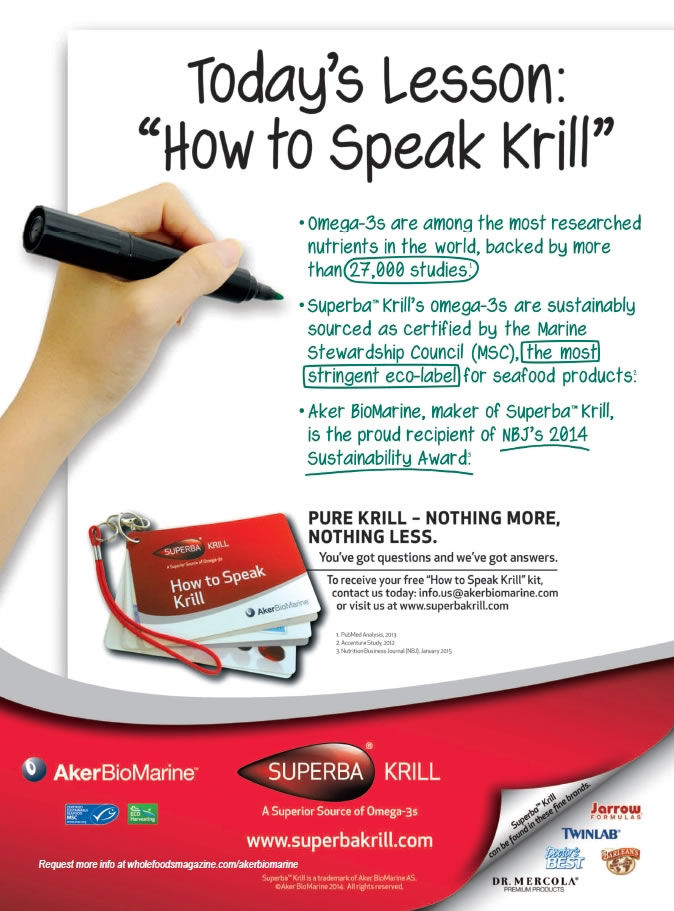 More comprehensive cholesterol management support is an emerging trend, Whittel believes, citing her company’s bergamot (Bergamonte from HP Ingredients) product as an example. “Products that help to maintain cholesterol levels already within the normal range will be the go-to products going forward,” she says. Ritcheske describes a combination of this same bergamot ingredient with plant sterol extract. “Each of these ingredients has strong scientific support for structure/function claims regarding cholesterol,” he says. Another similar product, he explains, features plant sterols in ester form. “This was done because the plant sterol esters were scientifically supported as the best dietary supplement source,” Ritcheske says.
More comprehensive cholesterol management support is an emerging trend, Whittel believes, citing her company’s bergamot (Bergamonte from HP Ingredients) product as an example. “Products that help to maintain cholesterol levels already within the normal range will be the go-to products going forward,” she says. Ritcheske describes a combination of this same bergamot ingredient with plant sterol extract. “Each of these ingredients has strong scientific support for structure/function claims regarding cholesterol,” he says. Another similar product, he explains, features plant sterols in ester form. “This was done because the plant sterol esters were scientifically supported as the best dietary supplement source,” Ritcheske says.
Says Whittel, “With the number of Americans taking prescription medications expected to reach the 30 million mark, and side effects of these statins becoming more apparent, consumers are searching for heart-healthy alternatives in the supplement aisle.”
What’s Current in Cardiovascular Support
The following developments in the heart health supplement market concern product formulation, dosage, delivery format and new perspectives on key ingredients.
Delivery and absorption. Enhancements to supplement absorption and bioavailability are an emerging trend, according to See. “The old saying that we grew up with—‘you are what you eat’—does not necessarily hold true as far as dietary supplements are concerned. What is more accurate is ‘you are what you absorb,’” he says.
His company’s patented vitamin E ingredient (Tocomin SupraBio) is an example of this drive toward bioavailability. See explains that the fat-soluble vitamin E family depends on certain compounds for absorption, and these compounds are often in short supply, resulting in poor bioavailability. The soft gel delivery system of this ingredient offers increased absorption of each type of tocotrienol (called isoforms) by an average of 250%. A recent human study published in the Journal of Nutrition showed these branded tocotrienols are absorbed and distributed well to vital human tissues (7).
CoQ10 formulations need to make sure they account for absorption, says Papas. CoQ10 is only partially absorbed under normal circumstances, so Papas says formulators must pay attention to the specific forms of this ingredient, as well as others like carotenoids.
The sector is also seeing advances in tablet 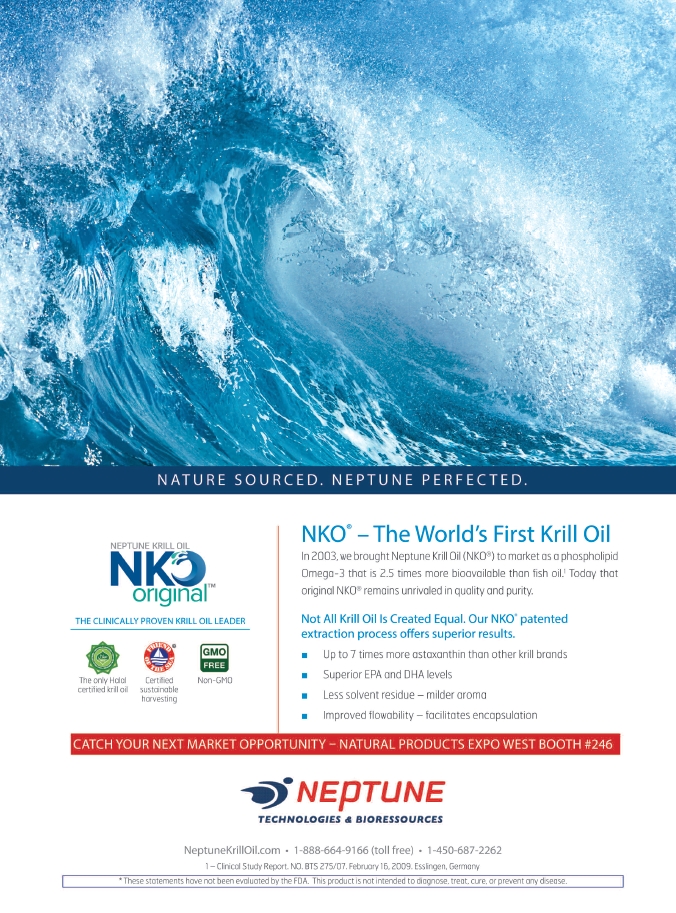 manufacturing that are improving the performance of supplements. Murray says his company used its expertise in working with tablets and all natural ingredients like cellulose gum to develop a slow-release tablet for products containing niacin. The niacin is released steadily over 6–8 hours to help consumers avoid the “niacin flush.” “This form of release is referred to as an intermediate release. Prescription and other over-the-counter intermediate-release niacin tablets utilize synthetic films to coat the tablet,” Murray says.
manufacturing that are improving the performance of supplements. Murray says his company used its expertise in working with tablets and all natural ingredients like cellulose gum to develop a slow-release tablet for products containing niacin. The niacin is released steadily over 6–8 hours to help consumers avoid the “niacin flush.” “This form of release is referred to as an intermediate release. Prescription and other over-the-counter intermediate-release niacin tablets utilize synthetic films to coat the tablet,” Murray says.
Combination products. Innovative combination formulas continue to drive the category as a whole. Rondinella says that in response to consumer demand, his company developed a combination of red yeast rice and CoQ10. It uses a CoQ10 ingredient from Kaneka that is made in the United States, which is not a minor consideration, he says. “Ingredients sourced outside the United States have posed quality problems in the past,” says Rondinella.
A combination of amino acid, vitamin, mineral and herbal antioxidants to protect the cardiovascular system was developed by Sugarek MacDonald’s company. Specifically, she says it features each of the following for their antioxidant benefits: natural beta-carotene; vitamin C; B vitamins 6, 12 and folic acid; natural d-alpha tocopherol; CoQ10; citrus bioflavonoids; L-carnitine; taurine; cayenne extract; garlic extract; green tea; ginger; hawthorn berry and gugulipid extract.
A recent publication in the International Journal of Cardiology cited by Levy shows that AGE in combination with vitamins B6, B12 and folic acid, as well as l-arginine, can benefit heart health. Specifically, it can favorably alter the ratio of brown to white adipose (fat) tissue surrounding the heart muscle (8). This combination can also help fight atherosclerosis by reducing homocysteine levels and slowing the calcification of arteries, Levy explains.
It is known that vitamin K2 and omega-3s have complementary mechanisms of action for cardiovascular health, according to Anderson, and so combining them in a supplement makes sense. “Consumers rarely seek out single vitamins or nutrients. Not only is it not cost effective, but they are also looking for combination formulas that work synergistically, and they want their efficacy to be proven,” he says.
Good formulas and herbal synergy. Many products, Winston says, are simply groupings of herbs or supplements that are believed to be beneficial individually, and the notion is that combining them is even better. But, this is not necessarily true, he explains.
 Fortunately, Bruno believes supplement companies are not merely taking the “everything but the kitchen sink” approach, where inadequate amounts of any nutraceutical linked with heart health are thrown in. Rather, clinically relevant amounts of nutrients backed by human research are becoming the norm. “Another component of this trend is to include nutraceuticals with different mechanisms of action, to avoid redundancy,” says Bruno.
Fortunately, Bruno believes supplement companies are not merely taking the “everything but the kitchen sink” approach, where inadequate amounts of any nutraceutical linked with heart health are thrown in. Rather, clinically relevant amounts of nutrients backed by human research are becoming the norm. “Another component of this trend is to include nutraceuticals with different mechanisms of action, to avoid redundancy,” says Bruno.
An example is his company’s recent reformulation of its blood pressure formula to include clinically relevant amounts of grape seed extract (MegaNatural-BP from Polyphenolics) and magnesium. The grape seed extract helps support vasodilation and circulation, while magnesium supports the conduction of nerve impulses and muscle contraction, including in the heart. Ken Whitman, president of Natural Vitality, Austin, TX, shares with us a quote from the University of Maryland Medical Center on the significance of magnesium: “Every organ in the body—especially the heart, muscles and kidneys—needs the mineral magnesium.” In fact, some researchers believe widespread magnesium deficiency is a key underlying cause of the heart disease epidemic (9).
Formulating knowledgeably is especially important with herbal combination products, Winston says. Proper combinations will yield synergy. “The belief is that certain herbs when used together can actually increase efficacy, reduce adverse effects and promote absorption,” Winston says. Some combinations are synergistic (1 + 1 = 3), while others may actually be antagonistic (1 + 1 = 1). The most effective formulas, he says, are often those that have a long history of use. Examples are combinations of the Western herbs hawthorn and night blooming cereus, or the Chinese herbs danshen (Salvia miltiorrhiza), astragalus, corydalis and dong quai for strengthening the cardiovascular system. Another example, per Winston, is the use of linden flower with olive leaf, motherwort and European mistletoe to support healthy blood pressure.
Condition-specific. “Consumers will continue to look for omega-3 products for the maintenance of overall health and for its antioxidant properties, but they will also become increasingly interested in condition-specific formulas to meet their individual health and wellness needs,” says Sabrina Di Blasio, marketing director for Neptune Technologies & Bioressources Inc., Laval, QC, Canada. Heart health, of course, is a natural condition-specific focus area when it comes to omega-3s.
Di Blasio says the growing appeal of krill oil presented an opportunity for her company to create condition-specific blends that make use of the high bioavailability of krill oil. Using the company’s branded krill oil as the central ingredient, one formula additionally contains CoQ10 to target heart and circulatory health. It also includes vitamins B6, B12 and folic acid, which help support red blood cell and vascular health, says Di Blasio.
|
Heart Health Products and Ingredients A.C. Grace Company: Unique Omega E+, Unique E Mixed Tocopherols Concentrate, Unique E Tocotrienols, Unique Omega Krill Oil. Aker BioMarine Antarctic US: Superba Krill. Barlean’s: Omega-7 Heart Remedy Swirl, Omega-7 Heart Remedy 30-ct softgels, Forti-Flax, Organic Flaxseed Oil, Omega Swirl Flaxseed Oil. Bluebonnet Nutrition Corp.: CholesteRice Red Yeast Rice Vcaps, Niacin (Flush producing) 100 mg Vcaps, Plant Sterols 600 mg Vcaps, Policosanol Vcaps, Red Yeast Rice 600 mg Vcaps, Cellular Active Ubiquinol Vegetarian Softgels, Heart Antioxidant Formula Vcaps, Taurine 1000 mg Vcaps, L-Arginine 500 mg Vcaps, Vitamin B6, B12 & Folic Acid Chewable Tablets, EarthSweet Chewables CellularActive Methylfolate Tablets, EPAX Omega-3 Heart Formula Softgels, Salomon Oil 1000 mg Softgels, Homocysteine Formula Vcaps, Acetyl L-Carnitine Vcaps. Carlson Laboratories: Heart Fit, The Very Finest Fish Oil, Co-Q-10, HeartBeat Elite, Ceylon Cinnamon. Carotech Inc.: Tocomin SupraBio Herbalist & Alchemist: Healthy Heart Compound, Cardio Calmpound, Hawthorn Solid Extract, Dan Shen/Chinese Salvia liquid extract, European Mistletoe liquid extract, Linden Flower liquid extract, Hawthorn liquid extract, Cayenne liquid extract, Olive leaf liquid extract, Motherwort liquid extract, Astragalus liquid extract, Corydalis liquid extract, Dang Gui liquid extract. NattoPharma USA, Inc.: MenaQ7 Vitamin K2, MenaQ7 PURE. Natural Factors Nutritional Products: Advanced Cholesterol Formula, Cholesterol Formula w/ Sytrinol, Celery Seed Extract, PeptACE Peptides, Nattokinase, CardiOmega Q10, Rx Omega-3 Factors. Natural Vitality: Natural Calm. Neptune Technologies & Bioressources Inc.: Neptune Krill Oil (NKO), NKO Beat. Nature’s Plus: AgeLoss Blood Pressure Support Tablets, AgeLoss Heart Support Tablets, HeartBeat Cardiovascular Support Tablets, Herbal Actives CardioActin Vcaps, Beyond CoQ10 200 mg Ubiquinol Softgels. Nordic Naturals: Ultimate Omega, Ultimate Omega+CoQ10, EPA, EPA Xtra, Omega LDL, Nordic CoQ10 Ubiquinol, Omega-3 Phospholipids. NOW Foods: Cholesterol Pro (Bergamonte), Beta-Sitosterol Plant Sterol Esters, Sytrinol, Red Omega (Red yeast rice, CoQ10, and Omega-3 fish oil in a softgel capsule), Blood Pressure Health. Reserveage Nutrition: Resveratrol, Ubiquinol CoQ10, Bergamot Cholesterol Support with Resveratrol. Soft Gel Technologies: CoQsol, CoQH-CF, CoQsol-CF, EZ Mega 3, Sytrinol. Sylvan Bio: Sylvan Wellness Red Yeast Rice 120 and 240 count bottles, Sylvan Wellness Red Yeast Rice with CoQ10 120 and 240 count bottles. Trace Minerals Research: Liquid CoQ10, Ionic Magnesium, Magnesium Tablets, Liquid Magnesium, ConcenTrace Ionic Trace Minerals, Stress-X Magnesium Powder, Mega-Mag, Liquid Vitamin D3, Vitamin D Pak. Twinlab Corp.: Blood Pressure Success, Cholesterol Success, Cholesterol Success Plus, Mega CoQ10 Caps, Super CoQ10, Ultra CoQ10, Twinsorb CoQ10, Twinsorb CoQ10, Krill Essentials Omega-3 Cardio Krill Oil, Emulsified Norwegian Cod Liver Oil, Emulsified Norwegian Cod Liver Oil Softgels, Emulsified Omega-3 Fish Oil, Emulsified Super Twin EPA/DHA Fish Oil, Mega Twin EPA Softgels, Norwegian Cod Liver Oil, Norwegian Cod Liver Oil Softgels, Omega-3 Fish Oil, Super Twin EPA/DHA Fish Oil Softgels, Hibiscus Tea and Hawthorn Tea (Alvita Tea). Wakunaga of America Co., Ltd.: Kyolic Formula 100 – Cardiovascular, Kyolic Formula 100 – Cardiovascular Liquid, Kyolic Formula 100 – Cardiovascular Vegetarian, Kyolic Formula 104 – Cholesterol, Kyolic Formula 106 – Healthy Heart, Kyolic Formula 107 – Phytosterols, Kyolic Formula 108 – Total Heart Health, Kyolic Formula 109 – Blood Pressure Health, Kyolic Formula 110 – CoQ10, Kyolic Omega-3, Kyolic One Per Day Cardiovascular, Kyolic Reserve Cardiovascular, Kyolic Red Yeast Rice Plus CoQ10, Kyolic Cardio-Logic, ModuChol. |
Within the heart health space, Sugarek MacDonald sees the design and retail marketing of supplements continuing to coalesce into a small group of structure/function categories, some of which have been discussed already. These categories include healthy lipid, blood pressure, triglyceride and homocysteine levels, and cardiovascular antioxidant protection. “Many stores are now gravitating to this specific approach on their shelves to make it easier for their consumers when shopping,” she says.
For blood pressure, options like taurine and l-carnitine are at the forefront. “Taurine keeps potassium and magnesium inside the cell while keeping excessive sodium out. Because of this function, taurine has a very successful track record in supporting healthy blood pressure levels in otherwise healthy individuals,” says Sugarek MacDonald. For triglycerides, a balanced dose of EPA and DHA omega-3s is found to be effective. For homocysteine, she says B vitamins as well as trimethylglycine derived from beets are good choices. This is because they serve as methyl donors, which help neutralize homocysteine.
Preventing oxidation. Di Blasio notes that the astaxanthin in her company’s krill oil provides antioxidant protection that extends the life of the product while protecting the body from free radical damage as well. Papas explains that extending shelf life in this way is one of the main objectives in many hearth health formulations.
For omega-3s, the goal is strong, wide-spectrum antioxidant protection during storage and once they reach the digestive tract. Omega-3s are prone to oxidation because they are polyunsaturated compounds. They can become ineffective and even harmful when oxidized, and may actually contribute to oxidative stress and inflammation, says Papas. “Tocopherols, tocotrienols and other antioxidants help prevent oxidation of omega-3 fatty acids both in the digestive system and after absorption,” he adds.
Concentration = better supplements. In the past, says Gibbons, technological limitations kept companies from bringing together the diverse heart health benefits of various nutrients into single supplements. The “reduced heart disease” risk claims allowed for vegetable phytosterols, for example, could not be unified with the “heart health support” claims of vitamins and minerals. “The concentration of phytosterols was too low and required a volume of material that severely limited the amounts of other nutrients that could also fit into a serving of tablets or capsules,” Gibbons says. But with new nutrient forms, including several developed by his company, such combinations are now being made available. Highly concentrated phytosterols can now be combined with antioxidant and anti-inflammatory vitamins and minerals in a single convenient supplement, he says.
Improved options. Emerging technology is also allowing companies to give consumers new options, such as a 100% vegan CoQ10 from Sugarek MacDonald’s company. She says in addition to the use of vegetarian softgels, the overhaul of this product also resulted in the use of non-GMO sunflower oil as a base, rather than soybean oil. This leaves the formula free of all major allergens, in addition to being encapsulated in vegetarian softgels, thus catering to consumers with special dietary needs.
Fighting inflammation. Inflammatory processes, says Papas, are now recognized as primary contributors to cardiovascular disease and high blood pressure. He says that an isoform of vitamin E, gamma-tocopherol, as well as its metabolite, have been found to quench nitrogen radicals that contribute to inflammation. Other compounds that can help address hypertension, thrombosis and oxidative stress include CoQ10, carotenoids and vitamin D, says Papas.
Focus on mitochondria. Often overlooked but recently gaining recognition in the heart health arena is the importance of mitochondria. Meletis believes that these tiny energy-making parts of cells deserve much greater consideration. He quotes research published in the journal of the AHA, which states the significance of mitochondria as follows (10): “Increased production of reactive oxygen species in mitochondria, accumulation of mitochondrial DNA damage, and progressive respiratory chain dysfunction are associated with atherosclerosis or cardiomyopathy in human investigations and animal models of oxidative stress.” Designing supplements that support mitochondrial function is therefore a logical choice for manufacturers.
Krill’s emergence. “The omega-3 market continues to evolve, and while fish oil has been the mainstay ingredient, other sources like krill oil are quickly emerging,” says Wright. As consumers begin to seek out novel ingredient combinations and new delivery forms for omega-3s, she says that companies are working to provide them. Her own company has enlisted a team of scientists to develop new krill oil-based formulations. The results have included a krill oil gummy bear product and a krill oil smoothie.
Fish oil updates. The fish oil market continues to cater to consumers that want smaller soft gels, without the burps or aftertaste of many inferior fish oil products, says van der Meulen. She says her company just launched a product that combines concentrated fish oil with phospholipids from herring roe oil. The phospholipids aid absorption and reduce the size of the soft gels.
More complex heart health formulas are another trend in fish oil, and van der Meulen points to her company’s products that blend fish oil with either CoQ10 or red yeast rice. “This nutritional synergy is important for customers who want comprehensive heart support, but can’t afford to buy multiple products,” she says.
Omega-7. The introduction of heart-healthy omega-7 products to the market is a development worth noting. Koch says his company’s recently launched product contains palmitoleic acid and less than 1% palmitic acid (both are types of omega-7). This is significant because, as Koch describes, the type of omega-7 may be key to achieving a heart health benefit. The omega-7 utilized in the study referenced earlier and found to be beneficial for cholesterol was purified palmitoleic acid derived from pharmaceutical grade, cold-water fish oil (5). Koch says that, conversely, palmitic acid is believed to be pro-inflammatory and associated with increased heart health risks.
K2 climbing. Calling it the last unrecognized vitamin in which most of the population is deficient, Anderson describes the widening role vitamin K2 is enjoying in the heart health market. It plays a major role in both bone and cardiovascular health. He says his company’s vitamin K ingredient (MenaQ7) activates matrix Gla protein (MGP), which inhibits calcium from building up in the arteries. Just as calcium is required by the body, vitamin K2 is required for calcium to be properly utilized.
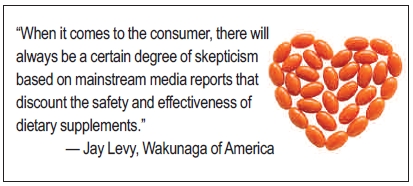 Research and intellectual property has been a focus for the Norwegian parent company behind this ingredient, Anderson says. Most recently, at the end of 2014, the company was granted a Canadian patent that covers pharmaceutical and nutraceutical products providing K2 in combination with one or more polyunsaturated fatty acids like fish or krill oil and designed to benefit bone, cartilage or cardiovascular health.
Research and intellectual property has been a focus for the Norwegian parent company behind this ingredient, Anderson says. Most recently, at the end of 2014, the company was granted a Canadian patent that covers pharmaceutical and nutraceutical products providing K2 in combination with one or more polyunsaturated fatty acids like fish or krill oil and designed to benefit bone, cartilage or cardiovascular health.
There are also positive results from a study into this ingredient that is pending publication, according to Anderson. In a double-blind, randomized clinical trial, three years of menaquinone-7 (MK-7) vitamin K2 intake was monitored in 244 healthy post-menopausal women. He says the trial showed substantial reduction of age-related stiffening of arteries in the ingredient group but not in the placebo group. In fact, he adds, it actually resulted in improved vascular elasticity as measured by ultrasound techniques and pulse wave velocity.
Finally, Anderson says his company has developed a nature-identical MK-7 vitamin K2 that contains no cis isomers. The result may be enhanced stability, efficacy and safety, Anderson says, as research has established the efficacy of the trans isomer form of MK-7, while the activity of cis isomers is unknown. WF
References
1. “Heart Disease and Stroke Continue to Threaten U.S. Health,” American Heart Association, Dec. 18, 2013, http://newsroom.heart.org/news/heart-disease-and-stroke-continue-to-threaten-u-s-health, accessed Jan. 5, 2015.
2. Paul A. Heidenreich, et al., “Forecasting the Future of Cardiovascular Disease in the United States,” Circulation 123, 933–944 (2011).
3. “Cardiovascular diseases (CVDs)” World Health Organization, http://www.who.int/mediacentre/factsheets/fs317/en, accessed Jan. 5, 2015.
4. “The CRN Consumer Survey on Dietary Supplements: 2013,” Council for Responsible Nutrition, http://www.crnusa.org/consumersurvey, accessed Jan. 5, 2015.
5. A.M. Bernstein, M.F. Roizen, L. Martinez, “Purified Palmitoleic Acid for the Reduction of High-sensitivity C-reactive Protein and Serum Lipids: A Double-blinded, Randomized, Placebo Controlled Study,” J. Clin. Lipidol. (8)6, 612–617 (2014).
6. A.M. Rimando, et al., “Pterostilbene, A New Agonist for the Peroxisome Proliferator-activated Receptor Alpha-isoform, Lowers Plasma Lipoproteins and Cholesterol in Hypercholesterolemic Hamsters,” J. Agric. Food. Chem. 4;53(9), 3403–7 (2005).
7. V. Patel, et al., “Oral Tocotrienols are Transported to Human Tissues and Delay the Progression of the Model for End-stage Liver Disease Score in Patients,” J. Nutr. 142(3), 513-9 (2012).
8. N. Ahmadi, “Aged Garlic Extract with Supplement is Associated with Increase in Brown Adipose, Decrease in White Adipose Tissue and Predict Lack of Progression in Coronary Atherosclerosis,” Int. J. Cardiol. 168(3), 2310-4 (2013).
9. A. Rosanoff, “Magnesium Deficiency Linked To Heart Disease,” Nutritional Magnesium Association, http://www.nutritionalmagnesium.org/magnesium-deficiency-linked-to-heart-disease, accessed Jan. 2, 2015.
10. N.R. Madamanchi, M.S. Runge, “Mitochondrial Dysfunction in Atherosclerosis,” Circulation Research, 100, 460-473 (2007).
See www.wholefoodsmagazine.com/supplements for additional coverage of the supplements category.
Published in WholeFoods Magazine, February 2015











